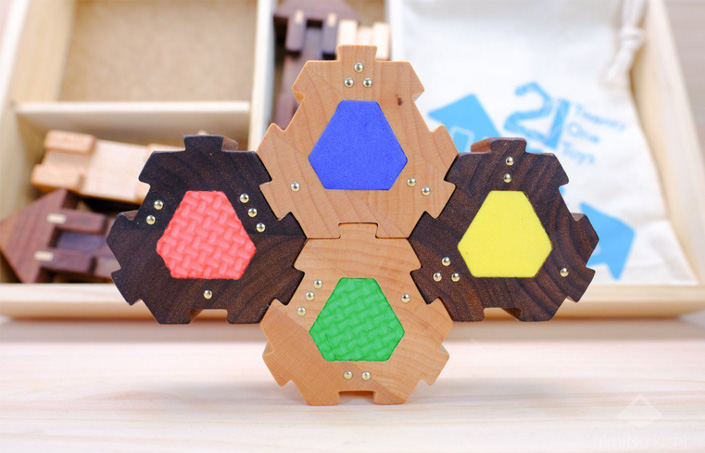Hi! We’re Twenty One Toys!
We’re called Twenty One Toys because we design and manufacture toys that teach 21st century skills. When we first started Twenty One Toys it was around the question: “How do we better prepare our offices and schools for the 21st century?”. Essentially what that means is these key 21st century skills: Innovation, Creativity, Collaboration and Complex Problem Solving.The difficulty with these key 21st century skills, that the experts are saying are now crucial, is that they’re quite hard to practice, assess and even understand. And even more importantly, you can’t teach them with a textbook. Which is why, through the work we’re doing, we’ve discovered that you can teach them with toys. That’s why we stole this headline from the Huffington Post that says that, ‘Toys are the new Textbooks’.
The reason we’re doing this is because of statistics like this one- where groups of three year olds were tested for creative genius, 98% of them were considered creative geniuses but by the time they were 25, only 2%. And even looking at more recent statistics, studies are now showing that students who have higher grade point averages (higher marks) are actually doing a far worse job at the traits necessary for innovation. Where they’re saying, these things are actually inversely related.
Now if we look at the study that was done with Fortune 500 companies, the top three job skills in 1970 they were looking for were reading, writing and arithmetic. In 1999, the key skills they were looking for were, teamwork, problem solving and interpersonal skills. Looking at innovative companies like Google, who say that GPA’s and marks are not a worthwhile criteria to look at while hiring. They say that test scores are worthless when they’re making the decision about who they bring on board. If you look at companies like LinkedIn, Slack and Harvard Business Review, the number one job skill they’re looking for is … empathy. Even studies out of the Harvard Business Review from this year have shown that there’s a direct link between empathy and commercial success. Companies that invested in empathy showed a 50% increase in earnings.
This is the Empathy Toy- a blindfolded, wooden puzzle that’s played when one or more players are given a built pattern and they have to describe that pattern so one or more players can recreate it. The challenge is that they’re actually blindfolded. They’re blindfolded before they are even given the pattern. This toy, while it started off as a student project, is, as of today, in over 43 countries, in 1000 schools, and over 100 offices. With one of the biggest milestones to date, that TIME magazine featured it as “one of 6 new technologies shaping classrooms of the future”. Here’s a window into some of the key people who are currently using The Empathy Toy both in their work and in the way that they teach. These are just some of the organizations that are using The Empathy Toy.
We have organizations that are using it for training and team building to introduce empathy as a key part of the way they work together, as well as the way that they offer services to their customers. We also have schools that are transforming. Like this one in Winnipeg, that used Then Empathy Toy to start and empathy-based leadership program called ‘21 Leaders’. They found a reduction of 85% conflict based office referrals over the course of 3 years.
The reason that they can do this is because of these guidebooks, that offer 50 different variations of the game play. Anything from who’s blindfolded and who isn’t, to how to work in large groups… To how to adapt the toy to introduce a range of topics- anywhere from Teamwork and Collaboration, Creative Communication, Autonomous Learning, Conflict Resolution, Diversity and Inclusion, and even touching on the aspects of empathy and how it relates to innovation.
Once you’re armed with the toy, you can lead your own Empathy Toy workshop. Or, you can have us come in to lead one for your team. There are a lot of different options for how we can engage, but at the end of the day, our mission is to create the first global community of toy educators and facilitators, bringing empathy and play into the way they work. Because innovation is not about filling a room with computers.
So, if you’re interested, get in touch! We’d love to hear from you! You can always drop us a note at hello@twentyonetoys.com. Until then, keep playing!
AREA PLAY 19 | Empathy Toys and the Future of Work and Learning | Ilana Ben-Ari


